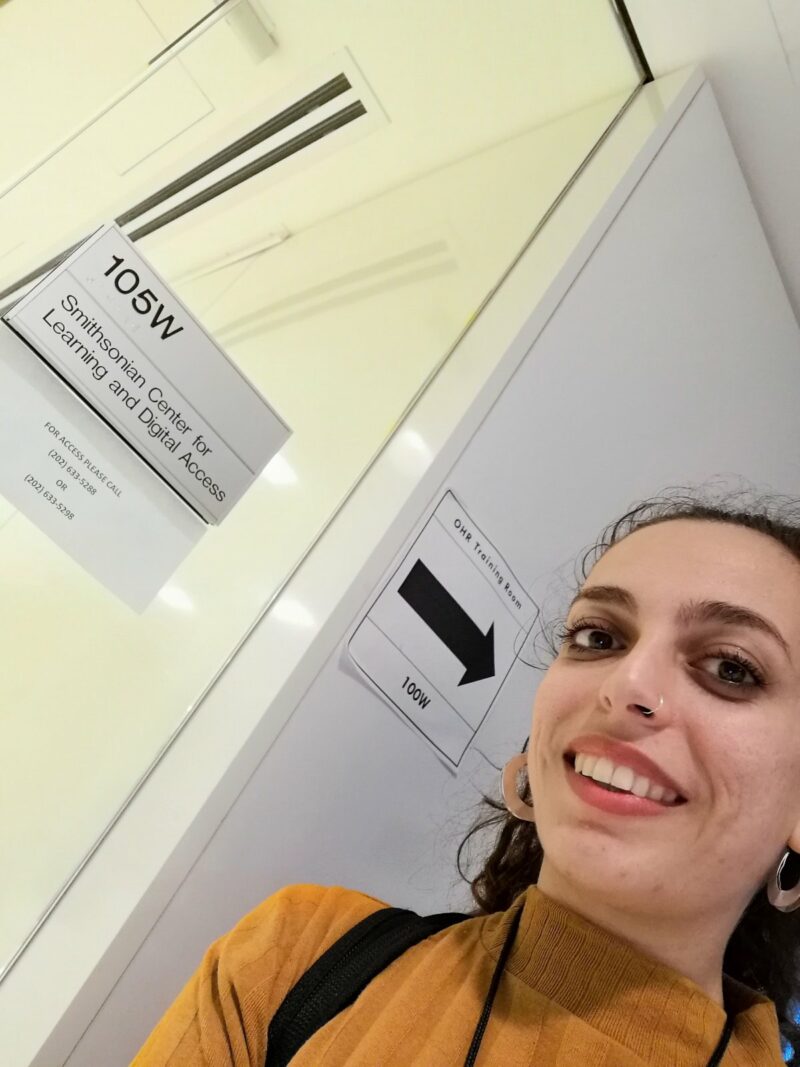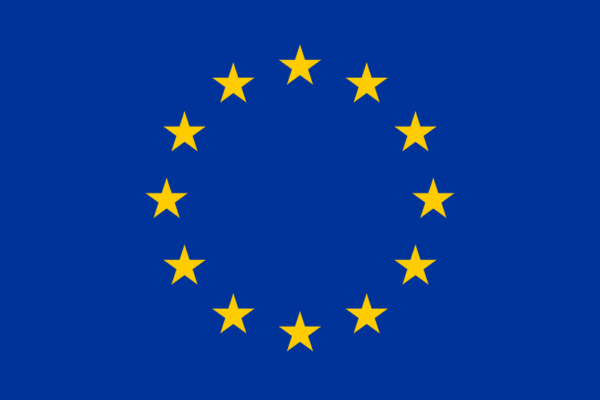By Myrto Theocharidou
It was planned as a three-month (20 January 2020- 20 April 2020) secondment but as most arrangements adapted to Covid-19 circumstances so did my Smithsonian secondment. Although, it was disappointing to leave earlier from Washington DC and the Smithsonian Center for Learning and Digital Access (SCLDA) office and cancel many activities and meetings planned for the third month of my placement, I am grateful for the great experience I gained and the time I spent there.
Reading through current literature and articles about digital archives and their users is an essential and valuable stage for investigating the field under study and identifying possible gaps in the field. However, with my secondment at SCLDA I got the opportunity to experience a real working environment outside of academia. The collaborations and mentorship during the SCLDA secondment added to my personal and my academic understanding of an empirical aspect, that of the work structures and real workflow of a running digital heritage platform call the “Smithsonian Learning Lab” (SLL).
The mission of SCLDA – which one of its greatest achievements is the creation and the maintaining of SLL platform- “is to deepen, enrich, and personalize learning by encouraging and supporting the creative use of museum resources through research and collaboration with the education community”. Smithsonian Learning Lab is the platform which turns these words into action by hosting a huge amount of digitised objects and allowing its users to create and share their own collections. SLL could be considered a helpful tool for educators who can implement Smithsonian and personally created resources in their lesson plans.
The Smithsonian collection is interdisciplinary and varies from zoology to arts and so do the themes of the user-created collections in SLL. As I am particularly interested in how memory and identity are shaped through digitised resources within digital repositories, my mentor at SCLDA introduced me to an SLL project initiative which had as a goal to support Ethnic Studies courses. The project provided support through the development and dissemination of instructional material highlighting Asian Pacific American (APA) history, art and culture.
Thus, during my time in SCLDA I focused on the analysis of this particular project -APA 2018- by conducting a content analysis of the APA2018 SLL’s published collections, to see how SLL is used, and which digital sources are mostly used by educators and curriculum developers.
For the analysis I examined sixty-three APA2018 data sets which were created and shared by educators and curriculum developers. I used MAXQDA software to categorise and code the resources and the sources found in the collections. An interesting finding of the analysis is the choice of bottom-tier sources (like blocks, homemade websites, social media) for retrieving images of everyday life activities, in opposition to top-tier and mid-tier sources (i.e. institutional websites, libraries) which were often cited under the photographs of historical figures.

MAXQDA Screenshot
After my venturous and adventurous trip back to Cyprus -I manage to repatriate one day prior to the county’s total lockdown- I continued to virtually work on my SLL secondment plan in order to complete the planned interviews with the Smithsonian Staff members. The aim of the interviews was to understand the factors which guided the creation of specific topics for a set of collections -i.e. APA 2018- and learn about the evaluation strategies and methods which are currently used in SLL to measure the impact and the outreach of the specific sets of collections. Emphasis has been given on how the collections which are related to memory and identity have been included in SLL plans.
During my secondment, I felt part of the SCLDA team from the very first moment I was invited to attend the department’s meetings which was an effective way to create an understanding of the routine, the dynamics, the needs and the different staff roles within SCLDA and to a certain extent, get a taste of how a digital repository runs.
It was heartbreaking -but necessary- to see all the buildings of Smithsonian complex closing their doors to the public due to the pandemic. At the same time, it was an exercise to show the need and worth of the development of effectively curated and high-quality digital databases of collecting institutions. During the pandemic the web-traffic of SLL was dramatically increased, as teachers were trying to find the best solution for the virtual home-schooling. This is actually the main purpose of the Smithsonian Center for Learning and Digital Access (SCLDA), to bring the collectable resources virtually to the houses of people.
The challenge for the institutions though is to keep their audience and users sustainably active. Will this dramatic increase continue and or will the repository be further recognized by a larger number of educators?
Myrto Theocharidou is a PhD Candidate at the Cyprus University of Technology and her research interests are memory practices, photography, visual arts and digital cultural heritage. She can be reached via mm.theocharidou@edu.cut.ac.cy, and her personal website is https://themyrto.wixsite.com/myrtotheocharidou.


